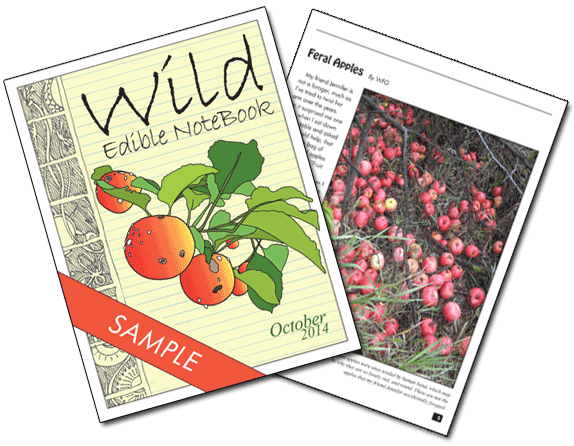That’s right. Not everything you read in a blog—or a book—is true, a bit of mind-blowing advice that my dear friend Mark imparted to me back in college one day. I repeat it now to warn Wild Food Girl readers to:
- Use common sense when it comes to wild edibles.
- Identify plants correctly before trying them.
- Cross reference accounts of a plant’s edibility among several guides.
- Eat only a small amount at first.
- Eat greater quantities only when you are 100% certain of the plant’s edibility.
 I have to admit I was less uninformed than I am now (still wanting of information) when I started blogging about wild edible plants at etmarciniec last year. I wrote about plants I found and ate in the wild and the books upon which I based my plant identifications and preparation methods, but at that point I wasn’t aware of any controversy over the quality of existent wild food guides. Then I read a section in Sam Thayer’s The Forager’s Harvest where he calls out some prominent wild food writers for advising people to eat toxic plants. Yikes.
I have to admit I was less uninformed than I am now (still wanting of information) when I started blogging about wild edible plants at etmarciniec last year. I wrote about plants I found and ate in the wild and the books upon which I based my plant identifications and preparation methods, but at that point I wasn’t aware of any controversy over the quality of existent wild food guides. Then I read a section in Sam Thayer’s The Forager’s Harvest where he calls out some prominent wild food writers for advising people to eat toxic plants. Yikes.
Since then I’ve spent some time reviewing and updating my etmarciniec entries for, as Thayer calls them, “statements of questionable accuracy,” or for discrepancies between different authors’ accounts of a plant’s edibility. At the same time, I’m redoubling my efforts to make sure I do as he suggests and “cite the source for any opinions or observations that do not come from [my] own experience.” I may post revised etmarciniec entries here at Wild Food Girl at a later date, but for now I’m leaving my first 50 entries over there and adding an [edit date – reason] statement to the end of entries I change.
I’d also like to point out to readers that even my own positive experiences do not always prove a plant’s edibility beyond questionable doubt. Take field pennycress (Thlaspi arvense), for example. Based on what I’ve read in wild food guides about the edibility of pennycress seeds, I’ve eaten them on numerous occasions and experienced no ill effects. However, I’ve only eaten small amounts at a time. Come to find out that the glucosinolates in the plant have poisoned cattle after they consumed significant quantities, a fact which caused the Canada Biodiversity Information Facility to classify pennycress as toxic. (I added a statement to my original pennycress seed article at etmarciniec and plan to look into it further so I’ll keep you posted on findings.) In the meantime, however, please heed the abbreviated safety rules above when it comes to eating pennycress, and perhaps play it safe by only consuming the seeds in small quantities. (By the way, lest I paint a poor impression of the very useful genus Thlaspi, check out www.prodigalsun.org for information on pennycress’ potential as a biofuel feedstock that doesn’t hamper food production for humans).
Whatever you do, know that it is good practice to think twice or even 3x about everything you read (or write)–and that includes my writing. Check back for updates before passing information along. And if you have any doubts or questions, please contact me, or better yet, help get this community talking by submitting comments or questions in the reply forms following each post.

hello, just thought i would let you know that your article on etmarciniec (http://etmarciniec.com/2009/06/weve-got-pennycress-growing.html) did NOT get the cautionary update on possible toxicity of this plant. happened across it just today & after attempting to leave a comment & failing i researched a bit & found you had moved here, so i thought i would let you know 🙂 might also link the old site to this one or put some kind of popup when people try to sign up on the old site that it has moved and where to find you!
i too love foraging for all kinds of wild edibles including mushrooms, and i cannot emphasize enough to DO A LOT OF RESEARCH! tons & tons. never stop. NEVER take one person’s word for anything…always always read/learn as much as you can & exercise caution–remember: when in doubt, throw it out!!
looking forward to reading more of your posts & hopefully learning lots~